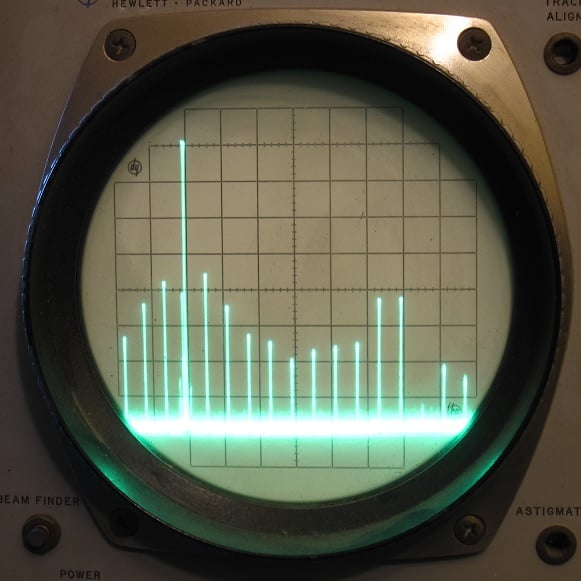I’m planning to install Arch Linux for the first time. Any recommendations on setup, must-have applications, or best practices? Also, what’s something you wish you knew before switching to Arch?
I didn’t read the documentation so I didn’t know you weren’t supposed to use sudo with yay.
-Ss can be added to pacman to search for packages. Pretty useful if you don’t want to DuckDuckGo them every time.
As for applications one neat one I don’t see recommended very often is xkill. You can use it to kill applications kind of like you would with the task manager in Windows. htop is probably a closer comparison to the task manager in general though.
There are a lot of Arch-based distros that are incredibly easy to install if you want a very easy setup process that doesn’t involve a lot of terminal work.
- archinstall is one of the better/best distro installs around - it just does what it says it will and is pretty intuitive
- LUKS encryption is easy to set up in archinstall - strongly recommend encrypting your root partition if you have anything remotely sensitive on your system
- If you do use encryption but don’t like typing the unlock password every reboot, you can use tpm to unlock - yes, this is less secure than requiring the unlock password every time you reboot, but LUKS + TPM unlock is still MUCH better than an unencrypted drive just sitting there
- sbctl is a good tool for secure boot - If you want to get more secure, locking down bios with an admin password, turning on secure boot, sbctl works really well and is pretty easy to use. I would suggest reading up to understand what it’s doing before just installing/configuring/using it
- yay is a solid AUR helper / pacman wrapper
Start from the install guide on the wiki. It’ll branch out fast and just follow all the links and read. If something goes wrong, check if you missed something on the wiki. It’s an amazing resource.
Also, look up your hardware on the wiki before you start.
The ArchWiki is amazing, probably don’t start by installing nothing but a window manager and adding things you need as you go
Don’t?
Probably don’t start by installing nothing but a window manager
Oops. I ran into a lot of problems by doing this, but boy did I run into a lot of tools too
I have learned so much but everything is so disfunctional because “I’ll get to it later” means never
Use btrfs with snapshots. Verify you know how to boot into snapshot after a failed update and repair the system. This is the most important thing and lets you experiment much more freely.
I’ve been using Arch off and on for a long time, since it was horrible to install and updates did often break stuff. This is not the case now 🖖, and the Arch wiki is your friend.
-
Consider using btrfs with automated snapshots using yabsnap. It includes a configurable pacman hook in case something goes awry. Also just nice to have snapshots in case you accidentally delete a file or something.
-
Use paru, an AUR helper. Good for random things which may not be officially packaged. Expect to run into failures, and learn to diagnose them. Sometimes it’s just a new dependency the packager missed. For both paru and pacman, clean the cache once in a while or automatically, or things will get out of hand.
-
Do the “manual” setup, at least the first time, so you have an idea what’s going on. Don’t forget to install essential stuff like iwd (if needed) when you do pacstrap, or else you might have to boot from live again to fix it. Once you’re done, take care to follow the important post install steps, like setting up a user with sudo, a firewall, sshd, etc.
As for general setup, I’ve recently embraced systemd-networkd and systemd-resolved. Might be worth giving it a shot, since there is no default network manager like application. You can even convert all your wireguard client configs into networkd interfaces.
Best practice: Keep a personal log of various tweaks and things you’ve configured, and set up automated backups (more of general guidance).
Have fun!
-
EndeavorOS if you want to have an easy time. Also be comfortable reading documentation.
Why EndeavorOS over
arch-install?
Stick to the many guides available and you will be fine. One thing which I either missed or was glossed over in most guides is to install the Linux-firmware package. It is considered an “optional” package, but on all the machines I have ever used I have run into issues without it.
I wish I knew then that debbie does the trick for me
Install it in a VM. Create snapshots. When you fuck it up then revert the snapshot.
Once you’re decent at figuring out what to and not to do then try to get proficient at file system snapshots so you can do the same thing more or less on bare metal.
This, and take physical notes, or at least make notes in something you can refer to on a screen that is not your phone, ideally another desktop or a laptop computer with internet access in case something unexpected comes up during the physical install and you need to search the archwiki or the wider internet.
I wish I new how to easily install an AUR package manager when I first started.
Step 1: go to the AUR and choose a package manager. I recommend paru, but there are plenty of others.
Step 2: install git using pacman
sudo pacman -S gitStep 3: copy the git clone URL for paru and pull it
git clone https://aur.archlinux.org/paru.gitStep 4: CD into the new directory
cd paruStep 5: install paru
makepkg -siNow when you find a package from the AUR you want, you can easily install it.
paru -S [package]Also, when you update your system, you only need to run
paru -Syu. You don’t need to run bothpacman -Syuandparu -Syu.Great advice.
Btw you don’t need -S to install a package, just
paru packagename
Works fine
Why paru specifically?
Rust-based and actively developed
Also, just
paruis equivalent toparu -Syu
- ALWAYS avoid partial upgrades, lest you end up bricking your system: https://wiki.archlinux.org/title/System_maintenance#Partial_upgrades_are_unsupported
- The Arch Wiki is your best friend. You can also use it offline, take a look at
wikiman: https://github.com/filiparag/wikiman - It doesn’t hurt to have the LTS kernel installed as a backup option (assuming you use the standard kernel as your chosen default) in case you update to a newer kernel version and a driver here or there breaks. It’s happened to me on Arch a few times. One of them completely borked my internet connection, the other one would freeze any game I played via WINE/Proton because I didn’t have resize BAR enabled in the BIOS. Sometimes switching to the LTS kernel can get around these temporary hiccups, at least until the maintainers fix those issues in the next kernel version.
- The AUR is not vetted as much as the main package repositories, as it’s mostly community-made packages. Don’t install AUR packages you don’t 100% trust. Always check the PKGBUILD if you’re paranoid.
It doesn’t hurt to have the LTS kernel installed as a backup option (assuming you use the standard kernel as your chosen default) in case you update to a newer kernel version and a driver here or there breaks.
I had a similar issue that was resolved by swapping to the LTS kernel. Learning about using a bootable Arch USB and chrooting into your install to make repairs would be a good thing for OP to know
Make sure you put “by the way I use arch” at the end of all your posts
And the neofetch print out
Those who are (wisely) suggesting snapshots, do you guys use a different partitions for data and OS? Because if you do revert to an older snapshot after a while, you’d loose new data, too (unless you recover it from current state)?
archinstall’s default btrfs layout has I think 4-5 separate subvolumes (I’m not running btrfs anymore so can’t check) but at the very least I remember it has:
- /
- /var
- /home
being separate subvolumes and mountpoints, you can just use a previous snapshot from 1 without rolling back others
Related to the snapshotting stuff, timeshift-autosnap is pretty helpful, hooks into pacman and takes a snapshot before installing/updating packages.
Personally I found btrfs and the snapshots helpful when starting to use arch, but now that I know how not to blow things up, it has been stable enough for me I just felt ext4 was easier.
Cool.
The archinstaller script is pretty good if you’re just needing a basic setup. Ive been really happy with a btrfs partion from the recommended disk layout, then using btrfs snapshots + grub bootloader to load from snapshots. You can also create a hook on pacman so that you create a snapshot when you upgrade packages.
Since you didn’t mention your experience, id recommend looking at the various desktop environments so you know which one to pick during install. You can ofc change later.
And read the arch docs. They are very good and have a lot of time invested into them. If you find you don’t have the patience to read them then you’re probably going to want to look at a different OS. Good luck!






